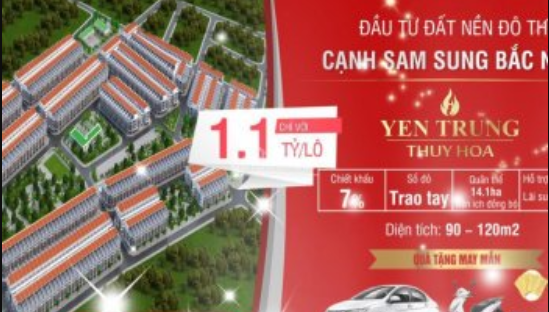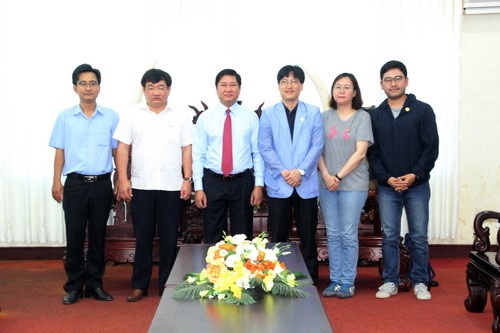Strategic manufacturing expansion
SeAH Steel, a half-century-old manufacturer from South Korea, is setting up a second plant in Nhon Trach (Dong Nai) to ramp up its annual production capacity by roughly 30%. The major player in the steel pipe sphere is reportedly pouring US $36 million into the factory to make two strategic moves: avoiding the rising tariff from the U.S. government on imported steel and penetrating the Southeast Asian market via Vietnam as the regional base. SeAH’s second factory has increased the density of steel plants in Nhon Trach, which hosts tens of steel manufacturers like Posco, SY Steel, Ton Phuong Nam, etc.

Nhon Trach is now home for several steel plants.
Excitingly in Ba Ria – Vung Tau, the industrial giant Hyosung has acquired a license for a liquefied petroleum gas underground storage depot in the Southern province. It is also building a polypropylene factory to replace the current main plant in Yongyeon (South Korea), meaning it is going to shift the entire operation of this division to Vietnam. These two major factories, together with other Hyosung’s side plants, will cover 60 hectares and are expected to inject US $1.2 billion into the area.
Not just in the South, the industrial group is also getting started on the first phase of the US $1.3 billion project on fabric, nylon, and steel fibers in the Chu Lai Open Economic Zone, Quang Nam province.

Tam Thang Industrial Park (in the Chu Lai Open Economic Zone), where Hyosung is building its new steel cord plant.
One thing to note is that Hyosung has invited Mr. Jun Dae Joo, the immediate former South Korean Ambassador in Vietnam, to act as its senior advisor and represent the group to work with the Vietnamese government This shows strong commitment from Hyosung in its ongoing investment in Vietnam.
The North is no less fascinating than the other two regions. Hai Phong is currently a hotspot as in early April, LG Chem and Vinfast have agreed to establish a joint venture to produce batteries for Vinfast’s electric vehicles. The lithium-ion battery factory is about to be built on 1.2 hectares inside the Vinfast’s industrial complex, near Hai Phong port. LG Electronics is also planning to phase out its Pyeongtaek factory (Seoul) by the end of this year to shift its mobile production to the port city, in an effort to cut cost.
If Hai Phong is becoming a LG’s major hub then Bac Ninh and Thai Nguyen are certainly “Samsung’s cities” and rumor has it that Vinh Phuc will be the third to join the “Samsung’s cities” club, as the giant is going to open its third smartphone factory in Vietnam. Like what happened in Bac Ninh and Thai Nguyen, the rumors have doubled the land prices in Vinh Phuc, especially in its two cities Vinh Yen and Phuc Yen, from VND 8-12 million to 18-25 million per sqmt.
Another source revealed that Samsung will still select Yen Phong (Bac Ninh), and it has hiked the land prices in Yen Phong up by 20-25% compared to the prices before Tet Holiday. This matter is still up in the air so investors should sort out information cautiously.

An ad banner dropped Samsung’s name to attract land buyers in Yen Phong (Bac Ninh).
Moving upstream the value chain
For 27 years since the diplomatic normalization, South Korean firms have selected Vietnam as their destination for manufacturing mostly thanks to one key advantage: low labor cost. That explains why the first and second waves of South Korean investments only concentrated in low-value, labor-intensive industries – construction and garment, respectively.
However, there are reliable evidences that South Korean companies are moving upstream the chain to provide higher-value products and services, and perhaps, it will stimulate a new wave of demand for other types of land use.
For the last few years, CJ Group has aggressively acquired Vietnamese firms in the food supply chain like Kim&Kim (kimchi distributor), Cau Tre (frozen food), and Minh Dat Food (fish and meat processor). The group (in partnership with the Korea International Cooperation Agency) has also invested in a chili plant project in Ninh Thuan since 2013 and just met with Ninh Thuan’s leaders last month to share its plan for the expansion of the project.

Mr. Tran Quoc Nam, Vice Chairman of the Ninh Thuan People’s Committee, met with CJ’s representatives. (Source: Ninh Thuan’s web portal)
The healthcare sector also received an exciting news that the conglomerate KABUL has met with Bac Ninh’s leaders to push for the construction of its premium general hospital, which plans to serve locals and approximately four thousands South Korean residing in the province.
Though these have not yet made a strong impact to the local real estate market, it shows potentials to fuel demand for estates other than industrial ones and gives investors reasons to believe in the development of the Vietnam’s property market.

















